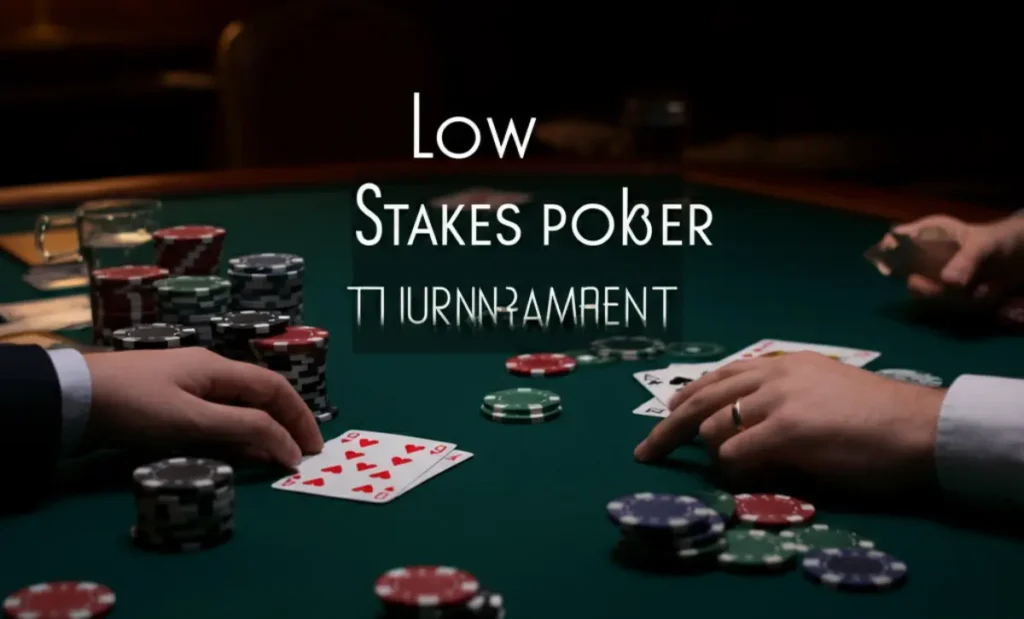Ever walked into a poker room, felt the atmosphere buzzing—and realized you didn’t need to risk a fortune to get a seat at the table? That’s the beauty of low stakes poker tournaments. These friendly, accessible events bring all the suspense and rush of a big tournament without the hefty price tag. Whether you’re a card room first-timer or a seasoned online grinder, low stakes poker tournaments let you hone your poker strategy, build confidence, and maybe even walk away with more than just memories.
Defining Low Stakes Poker Tournaments
So what exactly counts as a low stakes poker tournament? You’re looking for events with a buy-in that’s easy on the wallet—usually anywhere from a couple of bucks online to about $60 live. Even though these tournaments aren’t high-roller affairs, the competition, escalating blinds, and cash prizes are very real. And for many of us, that’s where the fun begins.
Where Can You Play?
There’s no shortage of places to join low stakes poker tournaments these days. Casinos and card rooms usually have nightly or weekly events, while online poker sites feature hundreds of low buy-in tournaments every day. Whether you want to play live or from the comfort of your sofa, you’ll find the right fit for your preferred poker format and schedule.
Variety in Every Game
You’ll notice a range of poker tournament structures out there—from classic freezeouts (one life, one stack), to rebuy tournaments (buy back in if you lose), and even rapid-fire turbo games with blinds that rise fast. No matter your skill level, each structure helps you learn a new aspect of tournament strategy.
Winning Strategies for Low Stakes Poker Tournaments
If you want to move up the chip counts, you’ll need to do more than just hope for good cards. Low stakes poker tournaments often attract new or casual players, which can lead to some unpredictable hands. Learning to spot mistakes and knowing how to adjust is key.
- Stay patient in the beginning: Don’t feel pressured to play every hand just because the stakes are low. Focus on solid hands, conserve your chips, and let others make the early mistakes.
- Keep an eye on your opponents: Notice who plays wild, who plays scared, who tries to bluff too often. These tendencies will clue you in on how to respond—and when to attack.
- Bubble time is your time: As the money bubble approaches, lots of players get nervous. Step up the aggression, put pressure on short stacks, and grab those blinds where you can.
Mindful Bankroll Management
It might feel safe to go all-in just because you’re not risking hundreds, but proper bankroll management will help you enjoy low stakes poker tournaments long term. The golden rule? Don’t risk more than you’re comfortable losing, and try to maintain enough buy-ins (50-100 is a solid guide) to ride out those inevitable swings. That way, you’ll stick around for more games and grow your poker skills with experience.
Avoiding Classic Mistakes
You don’t need to be a pro to spot the common pitfalls in small buy-in poker tournaments and make smarter choices.
Don’t Cling to a Single Pair
That top pair on the flop might look tempting, but in a big pot with several callers, someone could have a set or two-pair. Learn when to let go and you’ll keep your chip stack healthy.
Ditch the Curiosity Calls
Many new players just want to see the next card, even when it’s unlikely to help. Make your decisions count. Fold when you’re behind and only call when there’s a clear plan for how to win the hand.
Position, Position, Position
Poker veterans talk about the power of position for a reason. Being last to act gives you the best information, while playing from early positions can get you into trouble fast.
Climbing the Ladder—When to Move Up
Consistent success in low stakes poker tournaments means you’re ready to face tougher fields. But don’t rush. Make sure your bankroll can handle bigger swings, and take time to adjust your game for sharper competition. That way, moving up feels like a reward—not a risk.
Conclusion: Join the Action
Low stakes poker tournaments are where lasting poker memories are made. They’re affordable, friendly, and packed with lessons for any player eager to learn. Stick to smart strategies, avoid costly mistakes, and manage your funds—these are the keys to having fun and growing as a poker player. Ready to shuffle up and deal?
For additional tips and a deeper dive into tournament strategy, check out PokerNews’ Tournament Strategy Guide.


